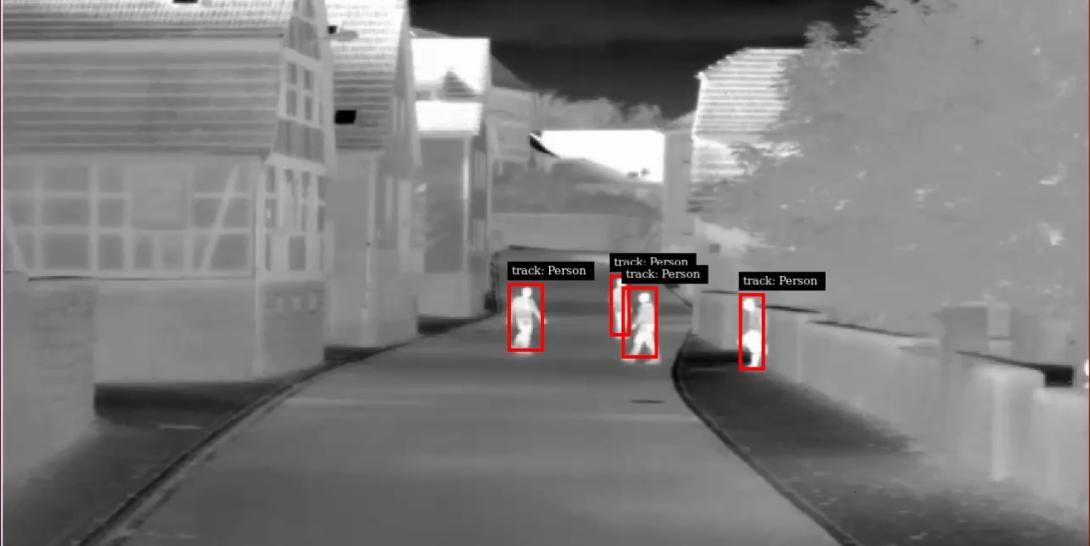Navy Intelligent Tracker Destined for Army Combat Vehicle
A new product called Intelligent Tracker developed by the Naval Surface Warfare Center Dahlgren Division (NSWCDD) will increase the Army’s Next Generation Combat Vehicle’s intelligent fire control capability to control its medium and large caliber weapon systems, according to an NSWCDD press release.
The Intelligent Tracker innovation—made possible with state-of-the-art algorithms developed over 10 years of cumulative research at NSWCDD—adds a rapid and precise automated target detection and tracking capability to the kill chain for manned and unmanned weapon systems.
Additionally, the Intelligent Tracker features a deep-learning based neural network prepared for image-based object detection on thermal and visible image inputs. This detector was programmed using open source datasets and datasets curated by the Dahlgren team.
“We’re processing the video from the gun turret cameras,” Ben Goldman, NSWCDD engineer who leads the project, says in the press release. “We’re running a series of image processing algorithms upon those videos on embedded hardware so we’re able to do it in real time and apply state-of-the-art processing algorithms on that video while providing operator aides and increased automation to shorten the kill chain cycle.”
The team is currently optimizing the performance for application on a Nvidia Jetson chip, taking advantage of Nvidia tools, to prune the neural network and reducing the computational precision to allow for faster calculation. The initial performance measures bode well for the use of these algorithms in detection, aided target recognition, and tracking at the frame rate of the incoming video for use as an operator aide in direct fire gunnery. The team’s future work on the Next Generation Intelligent Fire Control Project will focus on improving the performance of the algorithms and datasets while continuing to benchmark their effectiveness.
“We have really good collaboration tools in place for our research, development, test and evaluation moving forward,” Goldman says. “Our tools include a DevSecOps (Development Security Operations) pipeline in place to build, share and collaborate on our code.”
The NSWCDD employees work closely with the Army’s DEVCOM Armaments Center in New Jersey. NSWCDD’s has done related work for the Navy and Marine Corps that was sponsored by the Office of Naval Research and the Office of the Secretary of Defense. “Our previous work for the Navy and Marine Corps was sponsored by ONR (Office of Naval Research) and various places in OSD (Office of the Secretary of Defense). “It is definitely a joint effort that led to the knowledge base we needed to execute the Intelligent Tracker project. To bring this technology to the warfighter in an ethical and responsible manner is what we’re after, and to give our troops the edge in any future conflicts is also what we’re after,” Goldman says.
Meanwhile, the Navy is interested in the technological edge that the project’s capabilities can bring to bear on its weapon systems.
“We were funded this year to do a study on what it would take to bundle up what we’ve done for the Army and transfer it into the fire control for the next generation MK 38 system, adding that capability to the Navy side,” Goldman adds.
The Navy—specifically, the Surface Ship Weapons Directorate at the Naval Sea System Command’s Program Executive Office for Integrated Warfare Systems—is in the process of upgrading the MK 38 to a 30mm gun system. The MK 38 is a medium caliber machine gun system installed for ship self-defense to counter small threats in multiple domains.
The joint services have been contacting the NSWCDD Unmanned and Autonomous Systems Branch for the past decade with requests to make a highly automated detection and tracking capability a reality in their fire control systems. In response, the NSWCDD team worked with sponsors to develop the Automated Remote Engagement System (ARES), which is fundamental to detecting, tracking and automating the kill chain for manned and unmanned weapon systems in platforms from Navy warships to Army and Marine Corps light armored vehicles.
“Our goal is to enhance the level of automation for direct fire weapon systems while increasing the speed of operator engagements against targets,” Goldman explains in the press release. The automation applies to a wide range of applications from “a remote weapon station shooting a .50-cal on the unmanned boat tested on the Potomac River Test Range or the 30mm main gun on a Bradley Fighting Vehicle or a Stryker Combat Vehicle.”





Comment
As the Business Development
As the Business Development lead for the Javelin Weapon System at Lockheed Martin Missiles and Fire Control (LMMFC), I find the capability of the the "Intelligent Tracker" very interesting and highly applicable to Javelin now that Javelin has been integrated with Remote Weapon Stations (RWSs) and deployed on US Army Stryker vehicles. I would be interested in discussing this further with parties at NSWCDD if they wouldn't mind sharing their contact data. Thanks.
Joe Elmer
Comments